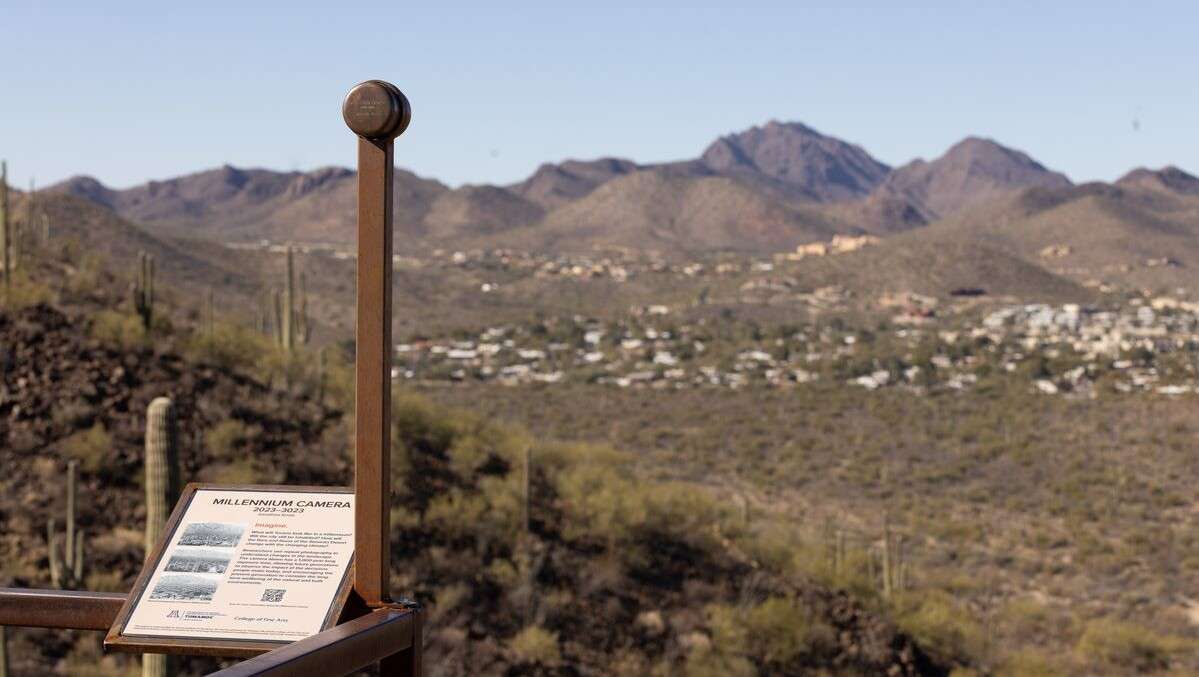What Makes the Perfect Valentine's Day Date for American Singles? (Poll)
A survey of 2,000 young singles currently seeking partners sought to uncover the anatomy of the perfect Valentine's Day date.

Dubbed the ‘Millennium Camera,' a device dreamed up by an experimental philosopher in Arizona aims to capture a one thousand year-exposure of Tucson.
Along with some colleagues, Jonathon Keats, a research associate at the University of Arizona College of Fine Arts, installed the camera next to a bench in Starr Pass with the aim of encouraging people to imagine a thousand years into the future.
Any photographer who has turned their camera off auto shoot mode will know that if you let in even just 10 minutes of light, much less 1,000 years, you'll have a blank white image.
Keats has planned for that, and chose to use a pinhole camera equipped with rare materials.
Through a pin-sized hole in a thin sheet of 24-karat gold, light will slip into a small copper cylinder mounted atop a steel pole. Over ten centuries, sunlight reflected from Tucson's landscape will slowly fade a light-sensitive surface coated in many thin layers of rose madder, an oil paint pigment.
When, or perhaps if, humans remove the surface from the camera in the year 3024, there will be a millennium-long exposure of the changes of Tucson's cityscape.
"Most people have a pretty bleak outlook on what lies ahead," Keats said ahead of his project. "It's easy to imagine that people in 1,000 years could see a version of Tucson that is far worse than what we see today, but the fact that we can imagine it is not a bad thing. It's actually a good thing, because if we can imagine that, then we can also imagine what else might happen, and therefore it might motivate us to take action to shape our future."
The bench at Starr Pass invites hikers to pause and look down at the city, and the camera encourages hikers to imagine what the future will hold.
"One thousand years is a long time and there are so many reasons why this might not work. There are forces of nature and decisions people make, whether administrative or criminal, that could result in the camera not lasting," he said.
If the camera does last, however, Keats outlines what we can assume the final image will look like. The landscape's most steadfast features will appear sharpest, although the land is not completely stable, so there will be some inevitable blur to the image.
Conversely, the most dynamic parts will be softest. Sudden changes will result in what will look like multiple images overlapped.
"Let's take a really dramatic case where all the housing is removed 500 years in the future. What will happen then is the mountains will be clear and sharp and opaque, and the housing will be ghostly," he said.
"All change will be superimposed on one image that can be reconstructed layer by layer in terms of interpretation of the final image."
The philosopher is also looking to install the cameras around the globe. In China, he is planning to put one in the once-industrial, yet fast-modernizing city of Chongqing, as well as in Griffith Park in Los Angeles. In May, he will install one in the Austrian Alps.
"This project depends on doing this in many places all over the world. I hope this leads to a planetary process of reimagining planet Earth for future generations," he adds.
SHARE This Time Capsule Project With Your Friends In To Photography…
Be the first to comment